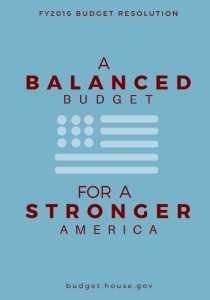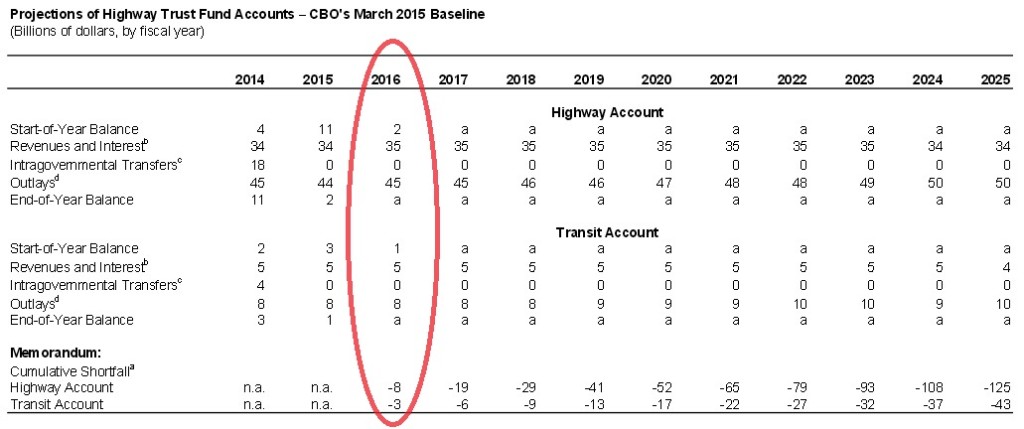Congress Punts on Highway & Transit Improvements
May 21st, 2015 | By: America's Infrastructure Report Card
To use a common football analogy, this week Congress decided to “punt” on finding a long-term highway and transit funding solution and reauthorizing federal surface transportation programs. In football, the purpose of punting is for a team to be in a better strategic position following a failed offensive effort. Congress might need to be reminded of this because their action this week did nothing to get them closer to identifying a long-term solution to increase transportation investment. Their failure to deliver on this important objective harms the nation and will lead to more potholes, overcrowded transit cars, and more deficient bridges. The U.S. House of Representatives has already approved a measure to extend the current highway and transit program until July 31, 2015, and the U.S. Senate will soon follow suit. This sets-up a similar dynamic as we saw last summer, where the federal Highway Trust Fund will approach bankruptcy at the same time that programs to build roads, repair bridges and improve transit systems will expire. This means that at the U.S. Department of Transportation (USDOT) contingency planning will begin on how to soon slow down payments to states for project work completed and, if Congress fails to do anything by the end of July, plans will be in place for the possibility of an August highway and transit department shutdown. More importantly, the extension means that states and localities will pull back even further in their planning and delivery of projects amidst this summer uncertainty. This represents the state of affairs when Congress shirks its responsibility to provide states budget certainty and adequate funding to meet the mobility needs of their residents and local businesses. Over the next 11 weeks, ASCE will be urging Congress to find a real and lasting solution that will allow America to modernize our roads, bridges, and transit systems. We can’t do this alone; we need your help and voice in this policy debate to ensure that members of Congress feel the pressure on the need to act. Please take a moment and write you members of Congress and tell them that they need to fix the Highway Trust Fund and act to improve the nation’s transportation system. It’s fourth and inches and time for Congress to run a play that gets this issue across the goal line.Tags: congress, highway trust fund, infrastructure, transportation
Comments Closed
Arizona’s Growth Makes Infrastructure a Smart Investment
May 14th, 2015 | By: Infrastructure Report Card
 Arizona has been growing, and it’s going to keep growing. Today the state has about 6.6 million people, but Arizona’s population by 2035 could be as high as 10.5 million people which is a lot more people who will be using the water infrastructure and traveling on the same roads. With such explosive growth, comes opportunities and challenges to keep up. The opportunities – new businesses arriving, increased productivity, and new jobs for workers – are there, but so are the challenges – congestion, having to expand existing infrastructure, and keeping up with maintenance for new and old assets. Arizona’s benefited from keeping ahead of it’s growth challenges in the past by adding new aviation facilities, growing the interstate network, and adding transit options that have outperformed their ridership estimates. Look at what has happened in just Maricopa county as the greater Phoenix area has grown:
Arizona has been growing, and it’s going to keep growing. Today the state has about 6.6 million people, but Arizona’s population by 2035 could be as high as 10.5 million people which is a lot more people who will be using the water infrastructure and traveling on the same roads. With such explosive growth, comes opportunities and challenges to keep up. The opportunities – new businesses arriving, increased productivity, and new jobs for workers – are there, but so are the challenges – congestion, having to expand existing infrastructure, and keeping up with maintenance for new and old assets. Arizona’s benefited from keeping ahead of it’s growth challenges in the past by adding new aviation facilities, growing the interstate network, and adding transit options that have outperformed their ridership estimates. Look at what has happened in just Maricopa county as the greater Phoenix area has grown:
 Investing in infrastructure has been well-timed and helped ease the growing pains of the state, especially in the Phoenix, but what about the future? To review the condition and needs of the state’s infrastructure both now and for the future, ASCE released the 2015 Report Card for Arizona’s Infrastructure on Wednesday as part of national Infrastructure Week. The Report Card assessed nine categories, giving the state an overall grade of “C.” While faring better than the nation’s infrastructure as a whole, the report reveals that the state’s infrastructure needs attention both for today and the future to keep up with growth. Here is a short video that explains the challenges facing Arizona’s infrastructure:
//
The state anticipates a significant population increase in the coming decades, so maintaining and modernizing infrastructure will be crucial to meet the needs of Arizona’s communities in the future. The Report Card offers five key solutions to raise the grades and prepare Arizona for the future:
Investing in infrastructure has been well-timed and helped ease the growing pains of the state, especially in the Phoenix, but what about the future? To review the condition and needs of the state’s infrastructure both now and for the future, ASCE released the 2015 Report Card for Arizona’s Infrastructure on Wednesday as part of national Infrastructure Week. The Report Card assessed nine categories, giving the state an overall grade of “C.” While faring better than the nation’s infrastructure as a whole, the report reveals that the state’s infrastructure needs attention both for today and the future to keep up with growth. Here is a short video that explains the challenges facing Arizona’s infrastructure:
//
The state anticipates a significant population increase in the coming decades, so maintaining and modernizing infrastructure will be crucial to meet the needs of Arizona’s communities in the future. The Report Card offers five key solutions to raise the grades and prepare Arizona for the future:
- We need infrastructure every day so we have to keep it working with good maintenance.
- Investing in infrastructure has allowed Arizona to grow, and investing in smart projects will keep it growing.
- Every community’s leaders should order an infrastructure health check-up.
- Borrowing from infrastructure funds just means you’ll pay more tomorrow.
- Planning for Arizona’s future starts today with sustainable choices, innovative investments, and resilience.
Tags: Arizona, growth, infrastructure, invest, roads, smart, water
No Comments »
Michigan Back to Square One to Fix Roads
May 6th, 2015 | By: Maria Matthews
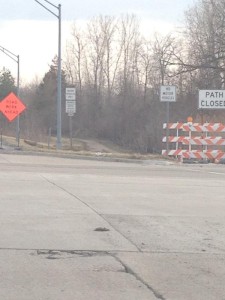 On May 5 voters from Detroit to Marquette resoundingly opposed the idea of a change to the state constitution invest in better and safer roads. In an 80% to 20% vote Michiganders opted to consider “Plan B” rather than enact a slight increase in sales and fuel taxes that would have raised $1.3 billion for road maintenance and improvements.
Ensuring adequate investment in Michigan’s roads has been a long time goal for Gov. Rick Snyder. He had this to offer after yesterday’s poll results came in:
“It’s essential that making Michigan’s infrastructure safer remains a top priority. While voters didn’t support this particular proposal, we know they want action taken to maintain and improve our roads and bridges. We appreciate that this bipartisan plan was supported by so many groups – business leaders and unions, public safety officials and local governments, teachers, and the list goes on. I plan to work with my partners in the Legislature on a solution that gives Michigan residents the safe roads they need and deserve and bolsters our growing economy.”
No matter what path is used to move Michigan forward, the sentiment from voters and policymakers alike is that something must be done to improve roads. There is general consensus that the state must act now. In this vein the Governor and legislators have begun to get to work on a viable alternative to Proposition 1. There are currently 10 plans in varying stages of development that could help Michigan meet it transportation infrastructure needs. Options range from vehicle-miles traveled to toll roads to a gas tax increase that would focus exclusively on fuel (rather than packaged together with other tax code changes as appeared on Tuesday’s ballot).
While defeat is never an easy pill to swallow, the time is now to regroup and continue to urge action. ASCE’s Michigan Section along with a number of municipal, agriculture and business groups came together to advance the idea of road funding and will extend their campaign until a solution is achieved. Carey Suhan, PE, President of the Michigan Section of the American Society of Civil Engineers also offered these thoughts on the rejected ballot measure:
“Michigan’s roads and bridges are among the worst in the nation because of underinvestment for the past five decades. As civil engineers, we witness the challenges of trying to run a 21st century transportation network using an outdated funding source. Unfortunately, Michigan voters chose to continue this trend in underinvestment, meaning our state will continue to have poor road conditions. It is now up to our elected leaders to offer another solution to improve Michigan’s roads, bridges and public transit.”
The current condition of Michigan’s roads and bridges was recently assessed by TRIP, a private nonprofit organization that researches, evaluates and distributes economic and technical data on surface transportation issue, found that Michigan’s underinvestment in recent years has resulted in further deterioration of its roads – there’s been a 23% increase in the percentage of major roads in poor condition. What’s scarier is this number is projected to increase to 53% by 2025 if the state and localities cannot keep up with regular maintenance and improvements.
If Michiganders want smoother and safer roads in the years to come, adequate revenue must be collected and allocated to maintain and improve the state’s transportation infrastructure now. With many other states taking action recently, Michigan will only fall further behind if lawmakers do not implement another plan quickly, Investing in better roads mean safer daily commutes and a brighter future for the state’s economy.
On May 5 voters from Detroit to Marquette resoundingly opposed the idea of a change to the state constitution invest in better and safer roads. In an 80% to 20% vote Michiganders opted to consider “Plan B” rather than enact a slight increase in sales and fuel taxes that would have raised $1.3 billion for road maintenance and improvements.
Ensuring adequate investment in Michigan’s roads has been a long time goal for Gov. Rick Snyder. He had this to offer after yesterday’s poll results came in:
“It’s essential that making Michigan’s infrastructure safer remains a top priority. While voters didn’t support this particular proposal, we know they want action taken to maintain and improve our roads and bridges. We appreciate that this bipartisan plan was supported by so many groups – business leaders and unions, public safety officials and local governments, teachers, and the list goes on. I plan to work with my partners in the Legislature on a solution that gives Michigan residents the safe roads they need and deserve and bolsters our growing economy.”
No matter what path is used to move Michigan forward, the sentiment from voters and policymakers alike is that something must be done to improve roads. There is general consensus that the state must act now. In this vein the Governor and legislators have begun to get to work on a viable alternative to Proposition 1. There are currently 10 plans in varying stages of development that could help Michigan meet it transportation infrastructure needs. Options range from vehicle-miles traveled to toll roads to a gas tax increase that would focus exclusively on fuel (rather than packaged together with other tax code changes as appeared on Tuesday’s ballot).
While defeat is never an easy pill to swallow, the time is now to regroup and continue to urge action. ASCE’s Michigan Section along with a number of municipal, agriculture and business groups came together to advance the idea of road funding and will extend their campaign until a solution is achieved. Carey Suhan, PE, President of the Michigan Section of the American Society of Civil Engineers also offered these thoughts on the rejected ballot measure:
“Michigan’s roads and bridges are among the worst in the nation because of underinvestment for the past five decades. As civil engineers, we witness the challenges of trying to run a 21st century transportation network using an outdated funding source. Unfortunately, Michigan voters chose to continue this trend in underinvestment, meaning our state will continue to have poor road conditions. It is now up to our elected leaders to offer another solution to improve Michigan’s roads, bridges and public transit.”
The current condition of Michigan’s roads and bridges was recently assessed by TRIP, a private nonprofit organization that researches, evaluates and distributes economic and technical data on surface transportation issue, found that Michigan’s underinvestment in recent years has resulted in further deterioration of its roads – there’s been a 23% increase in the percentage of major roads in poor condition. What’s scarier is this number is projected to increase to 53% by 2025 if the state and localities cannot keep up with regular maintenance and improvements.
If Michiganders want smoother and safer roads in the years to come, adequate revenue must be collected and allocated to maintain and improve the state’s transportation infrastructure now. With many other states taking action recently, Michigan will only fall further behind if lawmakers do not implement another plan quickly, Investing in better roads mean safer daily commutes and a brighter future for the state’s economy.
Tags: gas tax, infrastructure, Michigan
No Comments »
Be a Part of Infrastructure Week
April 29th, 2015 | By: Infrastructure Report Card
 The national week dedicated to highlighting the critical importance of investing in and modernizing America’s infrastructure systems, and the essential role infrastructure plays in our economy is May 11-15. The third-annual Infrastructure Week includes more than 30 events around the country from Alaska to Louisiana to New York.
A few of the events include:
The national week dedicated to highlighting the critical importance of investing in and modernizing America’s infrastructure systems, and the essential role infrastructure plays in our economy is May 11-15. The third-annual Infrastructure Week includes more than 30 events around the country from Alaska to Louisiana to New York.
A few of the events include:
- MONDAY in Washington, D.C. – Infrastructure Week Launch: Breaking through to the Future
- TUESDAY in Cleveland, OH – Follow the Flow: Celebrating Clean Water Investments in the Cleveland Metro
- WEDNESDAY in Pittsburgh, PA – Pittsburgh on the Move and Infrastructure Advocacy Day in Washington, D.C.
- THURSDAY in New Orleans, LA – Infrastructure Delivers More Than You Think with Tour of Port NOLA
- FRIDAY in Washington, D.C. – Building Resilience through New Financing Vehicles
Tags: infrastructure, planes, ports, report card, roads, states, trains
No Comments »
Another packed week in Washington
April 24th, 2015 | By: Olivia Wolfertz
As the clock ticks, post-winter pothole damage accumulates and families and businesses are increasingly affected by the outdated infrastructure conditions, lawmakers and members of Congress are raising their voices to find sustainable funding solutions. With just 37 days until our current transportation funding extension expires, several states and industries are making their case for investment. In Michigan, harsh winters and lack of repairs have left only 17 percent of the roads in good condition, costing vehicle owners an additional $132 in damage costs each year. Since Michigan’s “largest economic sectors-manufacturing, agriculture and tourism-are highly reliant on an efficient and well-maintained transportation system,” addressing transportation needs is critical to the state’s economic well being. In response to the great investment need, Proposal 1, an amendment that would raise the state sales tax from 6 percent to 7 percent, would help pay for road repair among other things. Infrastructure impacts every sector of our economy —including our nation’s agriculture. A recent article in National Journal explored the challenges farmers and ranchers face in getting their products to markets both here and overseas through waterways, rails, roads and ports. In order to support our nation’s agriculture, locks and dams need to be rebuilt, roads need to be resurfaced, trains need new tracks and ports need modernization and stable labor relations. This week the U.S. Senate held two hearings on the federal transit program. During the hearings, the Banking Committee heard from transit stakeholders and Acting Federal Transit Administration Chief Therese McMillan on the need to provide additional funding for capital grants to match the growth in transit projects seeking funding. The Senate Transportation, Housing and Urban Development Appropriations Subcommittee also held a hearing on the Obama administration’s fiscal year 2016 (FY16) budget request, which includes the surface transportation re-authorization GROW America proposal. During the hearing, Foxx addressed questions about GROW America’s ability to ensure long-term solvency of the Highway Trust Fund. In response to criticisms that the act would not ensure long-term solvency of the Highway Trust Fund, Foxx pointed to the hope that visible infrastructure improvements might motivate lawmakers to secure a long-term federal funding solution. These state and federal propositions are steps in the right direction for restoring our nation’s infrastructure. Given the Highway Trust Fund’s impending insolvency, it is more critical than ever that Congress work together to pass legislation to provide a sustainable, long-term funding solution to #FixTheTrustFund.Tags: #HighwayTrustFund, congress, infrastructure
1 Comment »
Seven States Say “Yes” to Gas Tax Modifications
April 13th, 2015 | By: Maria Matthews
 Seven state legislatures used this year’s session to address infrastructure investment. These states used a variety of available revenue sources to raise money for their aging roads and bridges. No matter what sort of package these states put together, the common thread was that they all included an adjustment of the gas tax.
ASCE supports an all options on the table approach to ensuring transportation infrastructure receives adequate funding. States that followed suit and pushed through funding measure that included gas tax increases include:
Seven state legislatures used this year’s session to address infrastructure investment. These states used a variety of available revenue sources to raise money for their aging roads and bridges. No matter what sort of package these states put together, the common thread was that they all included an adjustment of the gas tax.
ASCE supports an all options on the table approach to ensuring transportation infrastructure receives adequate funding. States that followed suit and pushed through funding measure that included gas tax increases include:
- Georgia – Governor Nathan Deal signed a $1 billion transportation funding package approved by the General Assembly on March 31. The bill converts the current state sales tax on gas to an excise tax set at 26-cents per gallon for passenger vehicles and 29-cents per gallon for commercial vehicles among other fee increases. Despite the size of the package, it is estimated that much of the newly generated revenue will be directed toward the maintenance and improvement of existing roads.
- Idaho – Idaho extended its legislative session for the purposes of addressing its funding shortfall. After pushing through competing proposals, the two chambers came together in a last-minute conference committee to achieve a 7-cent increase effective July 1, 2015 and a combination of increase user fees and access to available funds from future budget surpluses. While a great stride for Idaho, unfortunately, this bill will only generate an estimated $94 million of the $262 million in additional funding the state needs. (This bill is currently awaiting Governor Butch Otter’s signature.)
- Iowa – The first and fastest to act on an increase to their gas tax. While the vote was many years in the making, both chambers consented to raising the gas tax by 10-cents per gallon within a matter of hours. Governor Terry Branstad signed it into law the next day and four days later more money was being raised for transportation projects. The revenue generated by this increase will be used to fund the maintenance of Iowa’s structurally deficient bridges and provide an additional revenue stream for transportation projects at the local level.
- South Dakota – Governor Dennis Daugaard signed into law a 6-cent per gallon gas tax increase effective on April 1. It is estimated the increase in the gas tax and other motor vehicle fees will generate $85 million a year for state and local transportation projects. The measure also creates a “local bridge improvement grant fund” through which some of the newly generated revenue will be distributed.
- Utah – Utah was the second state to approve a gas tax increase in 2015. The increase goes into effect January 1, 2016. It will also continue to increase in future years using a system similar to the state’s sales tax. The bill also imposes a 12% tax on the wholesale price of gas when the price of gas reaches $2.45 a gallon and the overall gas tax rate been capped at 40-cents. Utah has made a number of positive investments in its transportation systems in recent years and this increase will ensure the state can plan accordingly for wear-and-tear and meet the needs of the growing population.
- Kentucky –The legislature here voted to freeze its gas tax at 26-cents per gallon. While this is about a 1.5-cent per gallon decrease, it avoids a projected 5.1-cent per gallon decrease in upcoming months. The legislature also used this measure to modify its funding formula in the hopes of preventing future dips.
- North Carolina – In a single day, the legislature passed and the Governor signed a 1.5-cent decrease in its gas tax effective April 1 and a reduction to 34-cents per gallon by January 2016. While this will not raise funds immediately, like Kentucky’s freeze, this measure will prevent a dramatic drop in the rates later this year. A new formula for calculating the gas tax will take effect on January 1, 2017 and is expected to result in additional revenue, in the form of a projected 2% increase per year, for the state’s Highway Trust.
8 Amazing 1940s American Infrastructure Images
April 6th, 2015 | By: Infrastructure Report Card
As part of the Library of Congress’ Bound for Glory: America in Color exhibition of newly digitized color images taken of 1940s America, several show the infrastructure that people made their livings working on and that helped grow the country. The photographs are by famed photographers such as John Vachon, Jack Delano, Russell Lee, and Marion Post Wolcott and “mark a historic divide in visual presentation between the monochrome world of the pre-modern age and the brilliant hues of the present. They change the way we look—and think about—our past.”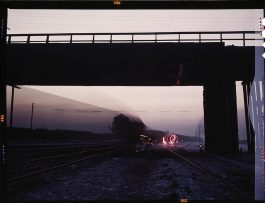






 Photos courtesy of the Library of Congress Bound for Glory Exhibition
Photos courtesy of the Library of Congress Bound for Glory Exhibition
Tags: dam, history, images, infrastructure, rail, road, train, transportation
No Comments »
It's Time Again to GROW America
April 1st, 2015 | By: America's Infrastructure Report Card
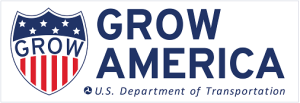 During a recent interview with Politico’s Mike Allen, U.S. Secretary of Transportation Anthony Foxx noted that the nation’s transportation system is “in a huge ditch.” Yesterday, the U.S. Department of Transportation (USDOT) unveiled its idea on how to get America out of that ditch with their GROW America proposal. If the name sounds familiar, it’s because that was the original title of the previous federal surface transportation program proposal unveiled by the Obama Administration last year. The key difference this year is that the Administration has identified a specific funding source, taxing overseas corporate profits, to pay for the $478 billion, six-year bill.
The GROW America proposal, among other things, would:
• Increase the nation’s overall investment in transportation by 45%, with a 29% increase in highway spending and a 76% increase in transit spending;
• Provide $18 billion for a multi-modal freight program that strengthens America’s exports and trade;
• Include $28.6 billion for passenger rail programs;
• Double funding for the TIGER competitive discretionary grant program and create a new $6 billion highway and transit competitive grant program; and
• Double the Transportation Infrastructure Finance and Innovation Act (TIFIA) program which encourages utilization of innovative financing mechanisms.
USDOT published a state-by-state impact of the benefits of GROW America investment which included ASCE Report Card data on state needs and economic impacts. The GROW America Act is an important legislative marker that seeks to define the debate about the need to increase federal infrastructure investment in order to meet current and future capacity and maintenance challenges. Funding certainty is important to states for delivering projects, as the six-year time frame supports, but of additional importance is the need to increase overall federal funding. The current revenue rates have not risen since 1993 and since that time the cost to deliver projects has increased. Since 1993, in real terms, the average federal highway dollar has lost over a third of its purchasing power. Please urge your members of Congress to act now to grow the federal surface transportation program and fix the Highway Trust Fund.
During a recent interview with Politico’s Mike Allen, U.S. Secretary of Transportation Anthony Foxx noted that the nation’s transportation system is “in a huge ditch.” Yesterday, the U.S. Department of Transportation (USDOT) unveiled its idea on how to get America out of that ditch with their GROW America proposal. If the name sounds familiar, it’s because that was the original title of the previous federal surface transportation program proposal unveiled by the Obama Administration last year. The key difference this year is that the Administration has identified a specific funding source, taxing overseas corporate profits, to pay for the $478 billion, six-year bill.
The GROW America proposal, among other things, would:
• Increase the nation’s overall investment in transportation by 45%, with a 29% increase in highway spending and a 76% increase in transit spending;
• Provide $18 billion for a multi-modal freight program that strengthens America’s exports and trade;
• Include $28.6 billion for passenger rail programs;
• Double funding for the TIGER competitive discretionary grant program and create a new $6 billion highway and transit competitive grant program; and
• Double the Transportation Infrastructure Finance and Innovation Act (TIFIA) program which encourages utilization of innovative financing mechanisms.
USDOT published a state-by-state impact of the benefits of GROW America investment which included ASCE Report Card data on state needs and economic impacts. The GROW America Act is an important legislative marker that seeks to define the debate about the need to increase federal infrastructure investment in order to meet current and future capacity and maintenance challenges. Funding certainty is important to states for delivering projects, as the six-year time frame supports, but of additional importance is the need to increase overall federal funding. The current revenue rates have not risen since 1993 and since that time the cost to deliver projects has increased. Since 1993, in real terms, the average federal highway dollar has lost over a third of its purchasing power. Please urge your members of Congress to act now to grow the federal surface transportation program and fix the Highway Trust Fund.
Tags: congress, highway trust fund, infrastructure, report card, transportation
No Comments »
Budgets Represent Priorities
March 19th, 2015 | By: America's Infrastructure Report Card
This week the U.S. House of Representatives and the U.S. Senate majorities unveiled their fiscal year 2016 (FY16) budgets. Traditionally, passing a budget in Congress is a particularly partisan endeavor with most all members in the majority voting in favor of their budget, and all the minority members voting against it. Should this Congress pass a budget in the coming weeks, it will not have to go to President Obama for his signature as budgets are self-imposed restrictions on Congressional spending. However, occasionally Congress has increased funding levels for certain programs despite the budget instructing them not to do so. These proposals offer some insight into what transportation funding levels might look like in the coming year. Disappointing for transportation was that both the House and Senate budgets assumed that road, bridge and transit spending would be limited to incoming revenues to the federal Highway Trust Fund (HTF). This is a problem as the HTF has been facing fiscal pressure over the years and is forecast to require $13 billion in additional revenues in FY16 just to maintain current spending levels. Which is why ASCE supported a House Budget Committee amendment by Congresswoman Kathy Castor (D-FL) that would have maintained current spending levels for surface transportation. Unfortunately, the amendment failed in committee by a vote of 14-22. Better for transportation in the House and Senate budgets is the creation of what is known as a “reserve fund” for the HTF, which would allow the tax committees to determine how best to fill the trust fund hole in a way that is deficit-neutral. These ways could include raising taxes (including the federal gasoline tax), cutting spending, or transferring other government funds to transportation. ASCE called for and supported the creation of this HTF reserve fund, however in order to increase spending for other infrastructure sectors, like water, dams and levees, a broader Infrastructure Reserve Fund is also needed. Senate Budget Committee Ranking Member Bernie Sanders (I-VT) introduced such an amendment in committee, which ASCE supported, but unfortunately that too was defeated on a party-line vote. Earlier this year, ASCE endorsed legislation introduced by Senator Sanders that would increase funding for our nation’s transportation, water and other infrastructure sectors. The Senator is expected to offer other infrastructure-related amendments on the Senate floor when the budget is up for a vote there next week. The debate over the last few days on the budget has crystallized one key fact on transportation spending: the vast majority in Congress believe that we should be investing more in transportation but there is not yet widespread bipartisan consensus on exactly how to pay for it. ASCE needs your help to tell Congress to work quickly to identify a long-term, sustainable funding solution that would #FixTheTrustFund before the legislative deadline of May 31, 2015.Tags: congress, highway trust fund, infrastructure, transportation, water infrastructure
No Comments »
Action to Fix Highway Trust Fund Needed by This Summer
March 9th, 2015 | By: America's Infrastructure Report Card
Tags: bridges, highway trust fund, infrastructure, roads, transit, transportation
No Comments »



 */ ?>
*/ ?>





